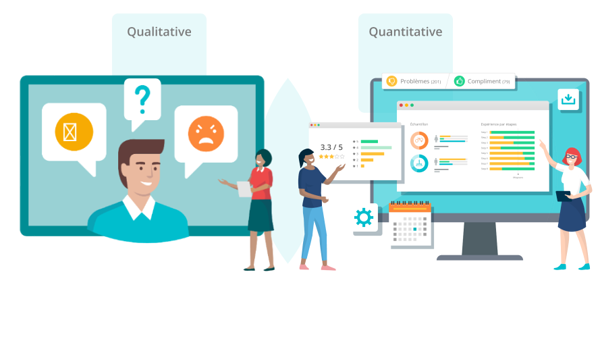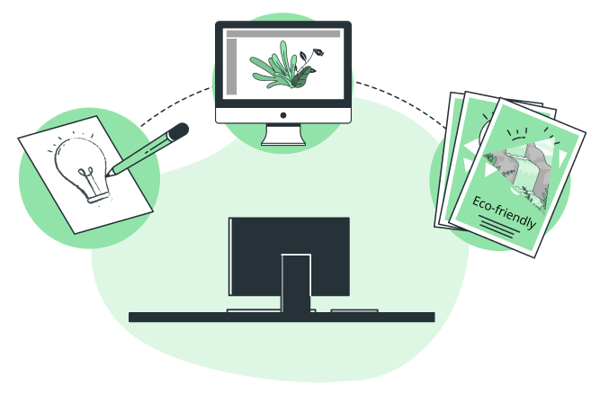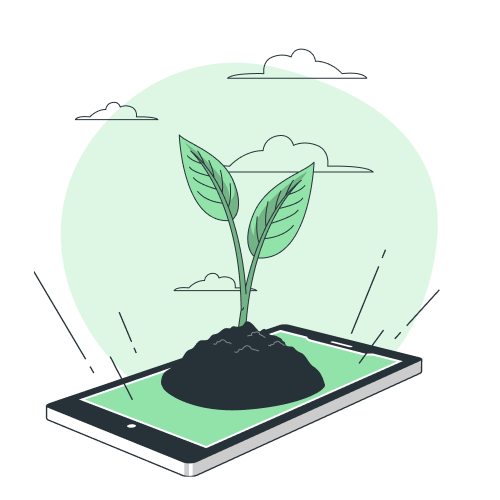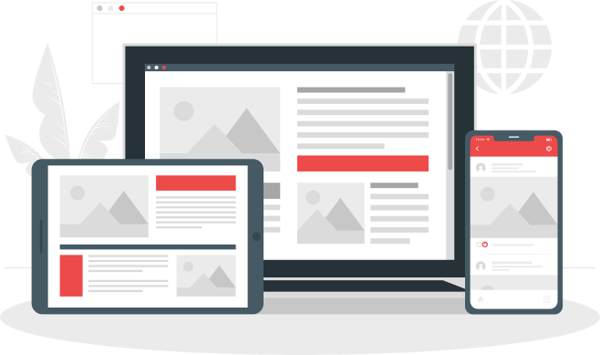March 11, 2022
Eco-design and UX: a winning formula for a successful user experience
Ecodesign and UX. These two words are becoming increasingly popular. But do we truly understand the underlying concept? The first question you should ask is: can digital technology be truly environmentally friendly and compatible with a quality user experience? At Ferpection we believe that yes, they are both compatible and complementary. But in concrete terms, what are they, how can they be implemented and, above all, what are the benefits ? We called on a specialist to get a clearer picture. Here is her analysis.
Eco-design and UX : what do these terms mean?
Eco-design, or how to get straight to the point
According to Milena Gatelier, a web developer specialized in ecodesign who we interviewed, eco-design is the fact of taking into consideration the ecological aspect resulting from the creation of a new product. And doing this, at all stages of its conception – ideation, production, reuse and recycling – in order to reduce its pollution footprint as much as possible.
A good practice that also considers social, accessibility and inclusion aspects, because, she says, "I am fundamentally convinced that the preservation of our resources is a subject that society as a whole must be committed to, in order to have a real impact."
UX to make the user experience more fluid
The field of UX aims to offer a fluid, pleasant and intuitive user experience. It refers to the feeling and attitude of a person when using a product or service, whether digital or not. It includes usability, brand perception, psychological expectations and emotions – which are essential notions. It is necessary to adopt an omnichannel vision of UX, and to take into account the different touch points with the brand.
Eco-design and UX are therefore similar in many ways, notably in how they are both concerned with fluidity of the user flow, performance and efficiency.
Discover our UX research methodologies.
Adopting an eco-design approach: the benefits for UX?
Although the benefits of UX, are now widely recognized, it is not always easy to distinguish between greenwashing and eco-responsible design. To find out more, Milena Gatelier shared her expertise.
To begin with, do you think that eco-design and UX are compatible?
Milena Gatelier: Yes, a resounding yes! Eco-design is about finding the essential and eliminating the superfluous. We make sure that the user finds what he needs as quickly as possible and we deliver quality content. It's a digital evolution aimed at making the client's journey more fluid.
We are also looking for ways to improve and optimize website performance at all levels. A leaner programming lightens the files, and this gives a faster site and a more pleasant UX.
"You should know that today, when a site takes more than 3 seconds to load, Internet users leave."
What are the best practices to adopt in an ecodesign approach?
I think it's important to start by really visualizing what eco-design is. This approach means trying to reduce as much as possible the digital pollution of each step of the product's creation to keep only the essential.
As far as a website is concerned, we will start by asking ourselves a basic question: do we really need a website? Because what is even more eco-designed than an eco-designed site is no site at all.
From the moment we create something, it has an impact, so the goal is to reduce it Then ask yourself what you really need, which can clarify the message.
Then comes the creation stage. We think about the tree structure, we ask ourselves how we are going to create this site, then, how and which host we are going to choose to store these data. Eco-design is in fact a lot of details that, put together, form a more virtuous whole. They are all important. We need to ask ourselves what is relevant and useful, rather than thinking about what we want.
So this is an approach to consider from the beginning of a project?
Completely. But when it comes to eco-design and UX, most people don't think about that first. They envision everything they want to put on their site, and they come up with complete projects requesting to integrate them in an environmentally friendly way. This is not enough. Eco-design is global, it is thought out from the beginning of the project, not when it is finished.
It is essential to adopt a more frugal process, to produce less but better, and to think about what can or cannot be done at each stage of the project.
It's good to think about pollution and recycling, but in the end, the best waste is the one we don't produce.
"The earlier we intervene, i.e. during the expression of the need, the functional design of the mock-up, the stronger the leverage effect is in terms of reducing the environmental footprint."
- Frédéric Bordage, Web Ecodesign: 115 best practices
What are the benefits of eco-design?
They are legion: reduced environmental impact, reduced use of data centers, better UX and UI design, more intuitive navigation. In my opinion, there is also a societal link that offers more consideration to the user, who is satisfied with the site and the company's brand image.
From a technical point of view, an eco-designed website pays attention to certain criteria for search engine ranking and this impacts its SEO performance.
In the long run, there is also a financial benefit that comes into play: a clear site always attracts more qualified leads and therefore, potentially more contracts. It's a virtuous circle. We can also talk about savings: if clients think about the features and plug-ins they need, they will probably get rid of some of their first ideas. This will save them the cost of an unnecessary service, in addition to the maintenance required for all these options.
Are there tools to measure whether our eco-design approaches are working?
For websites, yes, there is the EcoIndex. For me, it's a reference. It’s open source and above all, transparent. There are tools that measure the eco-design of sites, but we have no idea how and what they measure. The EcoIndex, on the other hand, provides a detailed report that shows what is going wrong and what to optimize for further improvement. It is an invaluable tool.
Are all digital services compatible with eco-design?
Unfortunately not. There are some CMS or platforms that do not give you the freedom to work on a more conservative optimization. And not everyone sets the bar for eco-design at the same level. Today and to a certain extent, it is possible to optimize a WordPress site in eco-design. But, there will always be people who say that if it's Wordpress, then it's not eco-designed. Personally, I think that a project is necessarily driven by needs and that we have to deal with them. You could maximize optimization, but indeed, WordPress will always be less eco-designed than a static site. It's still better than other CMS that only let you lighten the images. So we are far from a clean digital environment.
How did you come to specialize in eco-design?
I became ecologically aware at an early age, so it seemed natural to align my values with my business. I could not see myself defending personal convictions and leaving them completely aside in my work life. So I trained myself to be able to offer services that were truly eco-designed and not greenwashing. It is not yet very democratized, there is still no official training. Finally, it's a lot of good practice, logic, analysis and questioning. Digital literacy is about constant research. I read Frédéric Bordage’s book Green IT Web Ecodesign: 115 best practice, exchanged in forums. I also embarked on a CSR process to be in line with my positioning.
A few months ago, I decided to create an eco communication agency with a graphic designer and illustrator specialized in eco print and a web SEO writer. We are called "Les Triplettes de Grenoble“ [The Triplets of Grenoble]. Our objective is to guide those wishing to align their communication strategy with their values.
Summary
Eco-design and UX are therefore not only compatible, they also create an optimal experience for business. Integration of testers from the beginning of the project, fluid and attractive ergonomics, clear and efficient interface design, the common points of these two disciplines are numerous.
"When coaching companies, we sometimes advise them to reduce the number of applications or sites in favor of a unified entry point for their clients. Because in the end, it's the browsing experience that really matters.”
– Mathieu Lombard, UX Manager at Ferpection.
Like UX research and user testing, eco-design may still not be fully democratized, but it's clearly one of the big UX trends for 2022.
If you liked this article, please share it on your social network platforms. You can also subscribe below to our newsletter.
All articles from the category: User research UX For Good | RSS




